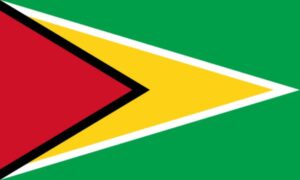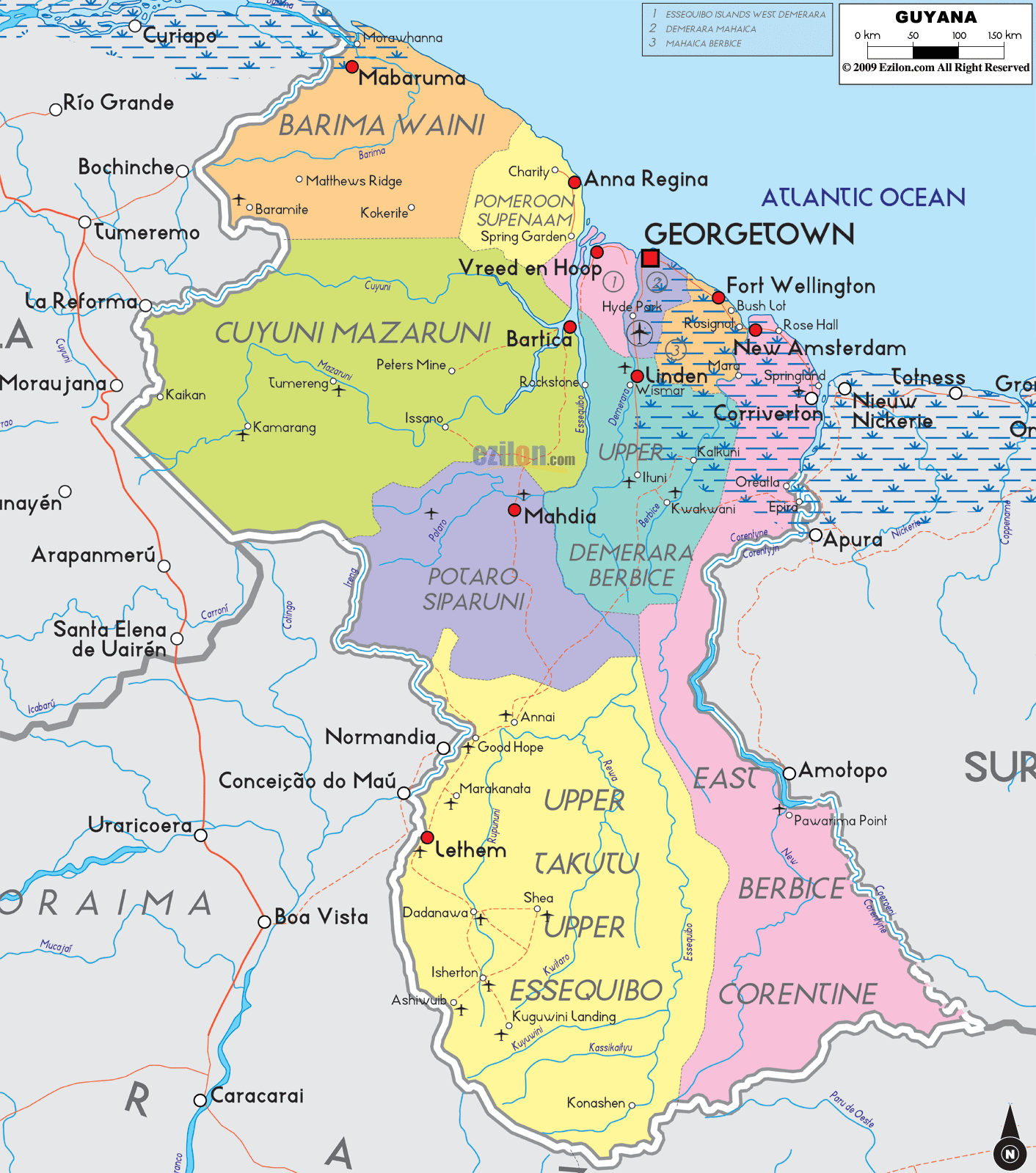
Official Name: Co-operative Republic of Guyana formerly British Guiana
Independence: 26 May 1966 (from Britain)
President: His Excellency Mr. Donald Ramotar
Government type: Republic
Capital: Georgetown
Background: Originally a Dutch colony in the 17th century, by 1815 Guyana had become a British possession. The abolition of slavery led to black settlement of urban areas and the importation of indentured servants to work the sugar plantations. Guyana achieved independence from the U.K. in 1966. In 1992, Cheddi Jagan was elected president in what is considered the country’s first free and fair election since independence. After his death five years later, his wife, Janet Jagan, became President but resigned in 1999 due to poor health. Her successor, Bharrat Jagdeo, was re-elected in 2001 and again in 2006. The current President Donald Ramotar was elected in 2011.
Time difference: 1 hour ahead of EST; 4 hrs behind GMT
Administrative Divisions: 10 Regions; Barima-Waini, Cuyuni-Mazaruni, Demerara-Mahaica, East Berbice-Corentyne, Essequibo Islands-West Demerara, Mahaica-Berbice, Pomeroon-Supenaam, Potaro-Siparuni, Upper Demerara-Berbice, Upper Takutu-Upper Essequibo
Languages: English, Amerindian dialects, Creole, Caribbean Hindustani (a dialect of Hindi)
Population 751,223 (2002 census)
763,437 (World Bank Estimate, World Development Indicator)
Literacy: Definition; age 15 and over has ever attended school
• Total population: 98.8% (2003 est.)
• Male: 99.1%
• Female: 98.5%
Land (Area): Total: 214,970 sq km (Roughly the same size as Britain, slightly smaller than the US state of Idaho)
• Land: 196,850 sq km
• Water: 18,120 sq km
Terrain: Mostly rolling highlands, low coastal plain, Savanna in south
Climate: Tropical; Hot, humid, moderated by northeast trade winds; two rainy seasons (May to mid-August, mid-November to mid-January)
Religion: Christian 50%, Hindu 35%, Muslim 10%, other 5%
Culture: The Culture of the South American nation, Guyana, is very similar to that of the English speaking Caribbean, so much so that Guyana is considered a Caribbean Nation. Guyana shares similar interests with the islands of the West Indies, such as food, festive events, music, sports, etc. Guyanese culture reflects the influence of African, Indian, French, Amerindian, Chinese, British, Dutch, Portuguese, Caribbean, and American culture.
Agriculture: Sugarcane, Rice, Wheat, Vegetable Oils, Beef, Pork, Poultry, Dairy, Fish, Shrimp
Industries: Bauxite, Sugar, Rice Milling, Timber, Textiles, Gold Mining
Monetary unit: 1 Guyanese dollar (G$) = 100 cents
Exchange Rate (2011): G $203.75 TO $1 US
Per capita GDP (2011): US$ 2,868
Real GDP (2010): G$307,198 million
National Bird: Hoatzin or the Canje Pheasant (Opisthocomus hoatzin)
National Flower: Victoria Regia/Amazonica
International Airports:
• Cheddi Jagan International Airport, Timehri
• Ogle International Airport
Transportation:
• Mainly by Air – However, Guyana is accessible by Ferry Crossing via Suriname/Guyana border and the Takutu Bridge in the Rupununi area. All visitors require a valid passport. Cheddi Jagan International Airport is located 25 miles/40 km south of Georgetown. Flights from Europe are routed through Antigua, Barbados or Trinidad and Tobago from New York, through Suriname, Trinidad, Barbados and Brazil; Miami and Canada through Trinidad and London through Barbados and Trinidad. Outward flights should be reconfirmed prior to departure. Guyana has over 600 miles of navigable rivers which are accessible by ferries and speed boat.
• By Road – Transportation around the city is provided by privately owned mini buses which operate in allocated zones. There is a well regulated fare structure. This arrangement extends to all mini bus routes throughout the country. Taxis have freer movement around the city.
• Departure – There is an exit tax of G$ 4,000 or approximately US$ 20. This tax can be purchased at the airport near the check-in counter
Airlines:
• Caribbean Airlines Limited (CAL)
• Delta Airlines
• EZJet
• Liat
• Suriname Airlines





